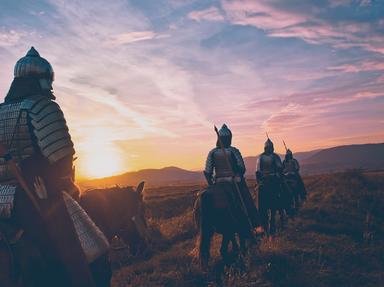Quiz Answer Key and Fun Facts
1. Most coal was formed from the first wave of plants to colonise the bare land, during the Carboniferous Period, 354-290 million years ago. In Britain, the earliest evidence of coal use dates to the Bronze Age. How were the people using it?
2. After the Romans left Britain in the fifth century AD, burning coal died out. However, according to Bede, coal smoke did have some use. What?
3. In 1306, when bishops, barons and knights journeyed to London to attend Parliament, they complained about the way in which coal was distracting them from their work. What exactly was it that caused the problem?
4. Several hundred years before Europe's "Industrial Revolution", China already had a thriving industrial society, partly due to the technique of removing volatile components from coal by baking it to make "coke". Which Chinese dynasty, in power from 960-1127 CE, is credited with the discovery of "coke"?
5. Whilst in Britain, the use of coal for domestic purposes was a late development, in China the burning of wood was supplemented by coal from about the third century BCE. At the time of the visit by Marco Polo around 1300 CE, what domestic use of coal particularly impressed the traveller?
6. Back in 14th century London, population increase and deforestation led to increased burning of coal. However, by the start of the 15th century, coal use had almost disappeared and wood was once again the favoured fuel. What was the major reason for the decline in use?
7. In the Middle Ages, coal had strong negative associations which reduced its popularity. Which of these is NOT one of them?
8. By the 16th century, quarrying and shallow mines had removed most of the near surface coal and shafts needed to be much deeper to get at the underground seams which often lay below the water table. The Church which owned the coal deposits was reluctant to make the investments to produce coal from depth. By 1540, this was no longer an issue. Why?
9. By the time of Elizabeth I, the population of England had recovered from the Black Death, the developing wool industry was cutting down trees to make pasture, the iron industry was using vast amounts of charcoal, and the navy became concerned about the availability of timber for shipbuilding. There was a general wood shortage but coal came to the rescue and was eventually used even for domestic heating. What architectural feature, which became commonplace in Tudor times, contributed most to coal's acceptance for use in homes?
10. The early settlers of the eastern seaboard of North America took coal with them on the voyages for heating and cooking purposes. Once there, they could use the abundant timber in the forests. Which coalbearing mountain range proved to be a barrier to westward expansion for the next 150 years or so?
Source: Author
bucknallbabe
This quiz was reviewed by FunTrivia editor
bloomsby before going online.
Any errors found in FunTrivia content are routinely corrected through our feedback system.

